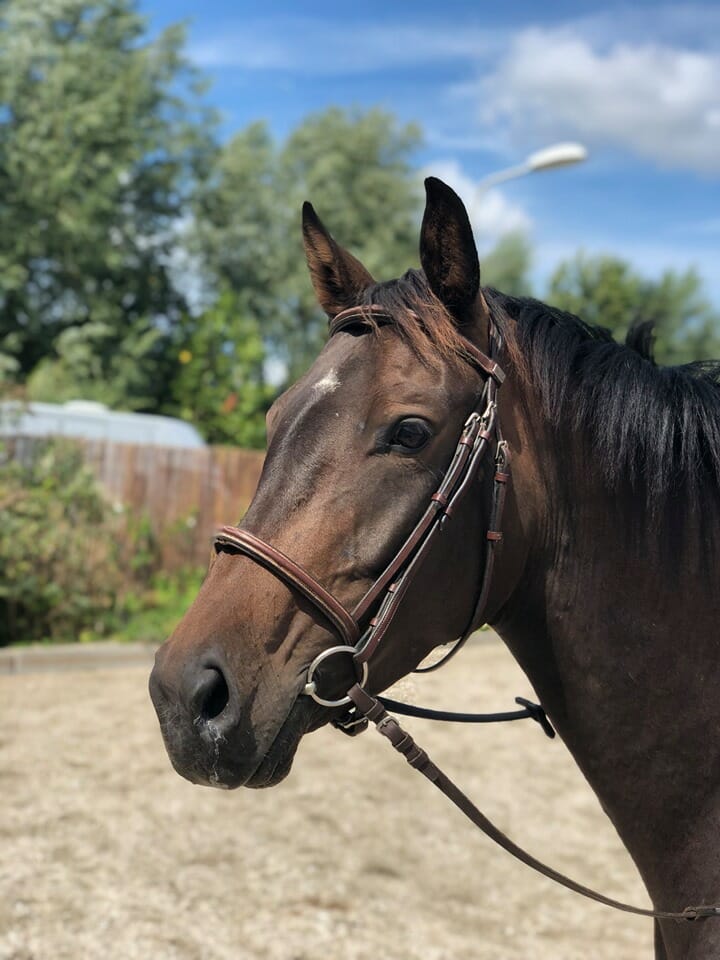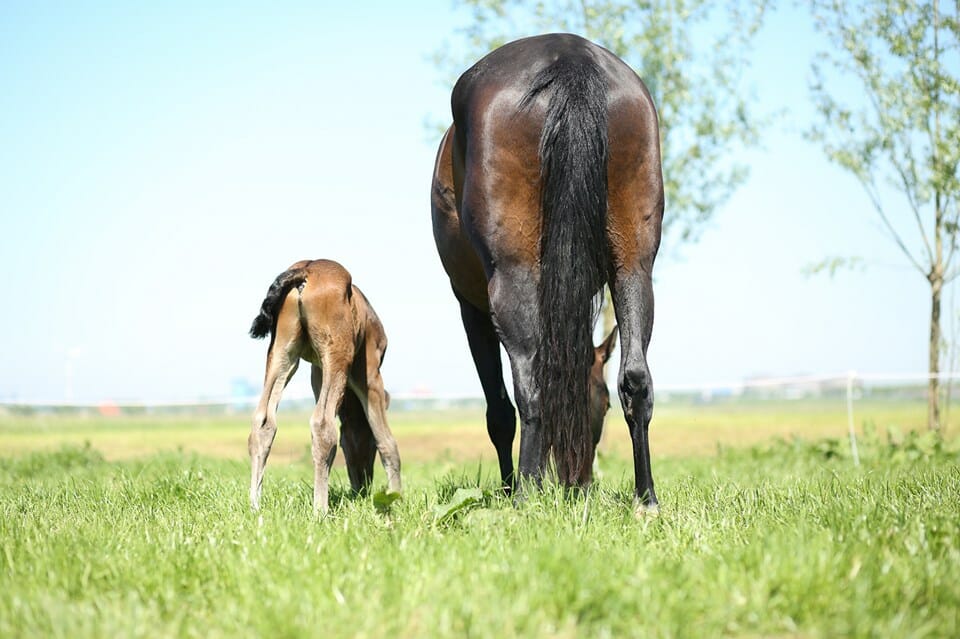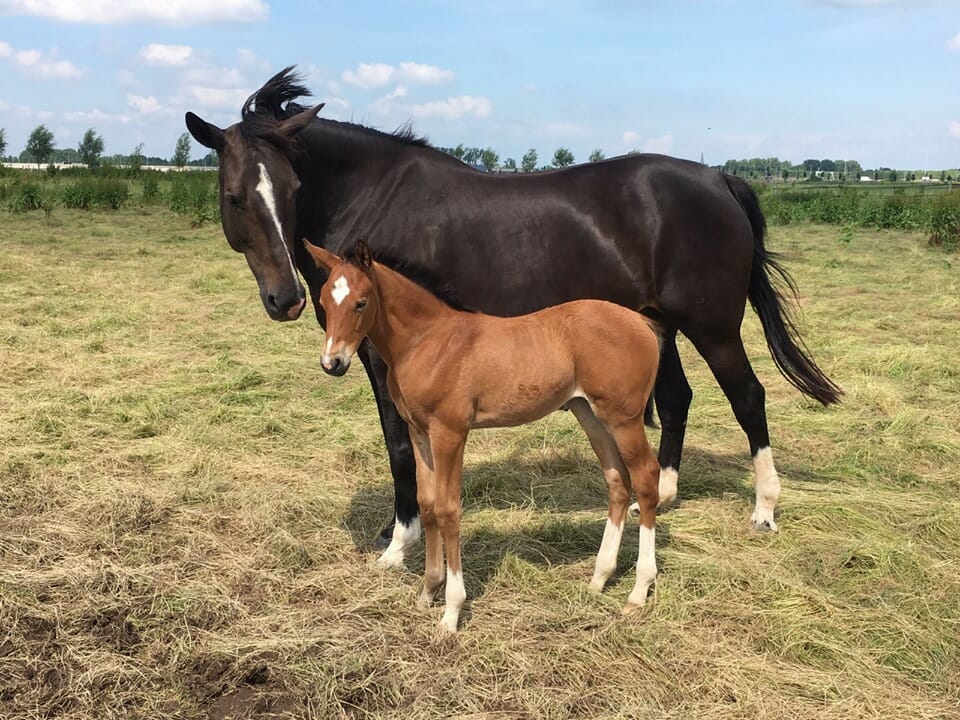I regularly hear that our horses are expensive. They’re not expensive, but they do cost a lot of money. There is a difference. They are not expensive because we sell our horses below cost, but even that is still a lot of money. We sell our horses below cost, because we want them to go to good owners. Owners that don’t ride low deep and round (because it causes damage), but make the effort of developing balance in their horses. Owners, who know horses belong outside, owners that look at the horse in a holistic manner. Or who strive to learn this. Owners who know that carrying 15% of your own bodyweight on your back is not easy and that horses can easily make the wrong move, which is why they understand that they need to consult a physiotherapist, osteopath or fascia release therapist for horses on a regular basis. So you see, we don’t just sell our horses to anyone. But why do our horses cost a lot of money?
A GOOD START IN LIFE REQUIRES INVESTMENT

The costs of “delivering” a healthy, well trained and sustainably kept horse, are very high. We invest a lot more in our horse’s well-being than any other breeder, trainer or trader. A horse that gets a good start in life costs more. Our horses see the therapist on a regular basis, their hooves are trimmed every four weeks, they have space to roam and access to unlimited roughage and get only the highest quality food with no sugars (Vitalbix). In addition to all that they come from good dam lines and the stallions are high quality. The mares are not pregnant every year, so their bodies can stay healthy – they are not just production tools. Even more importantly, the young horses (as well as the mares), are trained very carefully, on their own feet, in balance, which takes a lot of time. This is why our horses cost a lot. Because of all this, you have a horse that has had a good start and will therefore stay healthy longer. You have a sustainable horse with less veterinary costs. Often injuries and pathologies start very early in life and turn into huge problems later on. Think old injuries in the neck, back or legs, sugar issues, mental problems… Very common issues, right?
BREAKING DOWN THE COSTS
First of all, our horses come from good breeding lines, which means good dams. It all starts with the mare. As a breeder, you buy a mare, maintain her, cover her, pay veterinary costs, insemination costs (between 1000-2500 EUR), you feed and maintain the mare for another eleven months until the foal arrives and then you have two to feed and maintain. It is a long and pricey process.
For us, maintenance costs mostly consist of regular bodywork treatment, training (groundwork), hoof trimming every four weeks, special sugar free food (Vitalbix) and more. With many breeders the mare does not do much, so she does not receive bodywork and the like. She also often has foals every year. Or she is expected to compete as soon as possible. Many breeders forget that having a foal is a tough job and it has a major impact on the mare’s body. Foaling takes its toll. This is why we train the mares, treat them and don’t breed them every season. This is the right thing to do for the mare, but it is costly. The years between foals, the mare just costs money.
Then comes the foal. Unfortunately, something going wrong with the foal is not uncommon. From incidents that “only” entail veterinary costs, to tragedies like the foal or the mare or, worst case scenario, both of them, die. These kinds of mishaps have to be calculated into the cost as well. Unfortunately, nature can sometimes be very cruel.

THE FOAL
Let’s assume the foal is healthy. In the first three months, we already have the foal evaluated and treated by an expert therapist. Gently. Any potential asymmetries are discovered and tackled as best as possible. By doing so when they are still foals we can avoid potential issues in the future. By the time the foal is three months old, the trimmer has also visited a couple of times. After six or seven months, the foal is weaned. As far as we are concerned, the latter, the better.
After weaning, the mare is then seen by a therapist again by a physiotherapist, osteopath and/or a fascia specialist. The groundwork training is slowly picked up again. But we take it easy, as we know giving birth is no small affair. It saddens me to see mares already being ridden as soon as the foal is weaned or even pregnant again, while her body is not ready for that yet. If her body is not strong and trained, carrying the weight of the rider or the foal will only wear her down more. Not to mention the hormones.
Part 2 of this post at this link
If you found this post interesting, you may also like the content below:
ONLINE COURSE: Compassionate Training for Today’s Sport Horse: https://www.equitopiacenter.com/shop/compassionate-training-for-todays-sport-horse/
VIDEO: Training Without Fear: https://www.equitopiacenter.com/videos/training-without-fear/
BLOG: Training your Horse in Vertical Balance: https://www.equitopiacenter.com/training-horse-vertical-balance/



